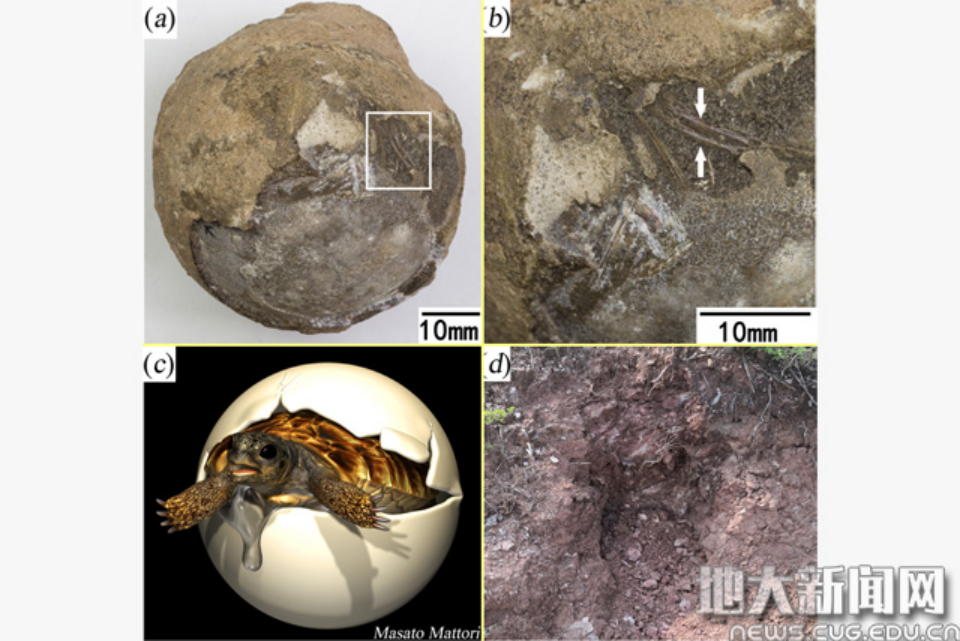CUG team led by Associate Professor HAN Fenglu from the School of Earth Sciences, in cooperation with the researchers from the University of Calgary, Royal Tyrrell Museum of Palaeontology, and Institute of Vertebrate Paleontology and Paleoanthropology of the Chinese Academy of Sciences, published “A large and unusually thick-shelled turtle egg with embryonic remains from the Upper Cretaceous of China” in Proceedings of the Royal Society B: Biological Sciences online on August 18, 2021. The abstract of the paper is as follows.
Turtle eggs containing embryos are exceedingly rare in the fossil record. Here, we provide the first description and taxonomic identification, to our knowledge, of a fossilized embryonic turtle preserved in an egg, a fossil recovered from the Upper Cretaceous Xiaguan Formation of Henan Province, China. The specimen is attributed to the Nanhsiungchelyidae (Pan-Trionychia), an extinct group of large terrestrial turtles (possibly the speciesYuchelys nanyangensis). The egg is rigid, spherical, and is one of the largest and thickest shelled Mesozoic turtle eggs known. Importantly, this specimen allowed identification of other nanhsiungchelyid egg clutches and comparison to those of Adocidae, as Nanhsiungchelyidae and Adocidae form the basal extinct clade Adocusia of the Pan-Trionychia (includes living soft-shelled turtles). Despite the differences in habitat adaptations, nanhsiungchelyids (terrestrial) and adocids (aquatic) shared several reproductive traits, including relatively thick eggshells, medium size clutches and relatively large eggs, which may be primitive for trionychoids (including Adocusia and Carrettochelyidae). The unusually thick calcareous eggshell of nanhsiungchelyids compared to those of all other turtles (including adocids) may be related to a nesting style adaptation to an extremely harsh environment.

(a) Macromorphological photograph; part of its external surface was broken. (b) Enlarged image of the white box in (a), showing exposed embryonic bones. (c) Yuchelys nanyangensis during incubation (imaginative picture). (d) The stratum of Fossil CUGW EH051 output.

Three-dimensional images and skeleton reconstructions of the embryonic remains in CUGW EH051. (a,d) Two opposite views of the whole image. (b,c) Reconstruction of the embryo skeleton of CUGW EH051 in dorsal view (b) and ventral view (c). The preserved bones are shown in red colour. Scale bars equal 10 mm. Abbreviations: fe, femur; hu, humerus; md, mandible; mx, maxilla; pp, plastral plate; ra, radius; ri, rib; sc, scapula; sk, skull; ul, ulna; ve, vertebra.

Microstructure of the eggshell from CUGW EH051. (a) Radial thin section under normal light. (b) Radial thin section under cross-polarized light, the red and white arrows represent primary and secondary shell structures, respectively. (c) Outline drawing of radial thin section, solid lines represent boundaries between shell unites, dotted lines represent inferred lines of boundaries, shaded areas represent dark patches. (d) SEM image of the blue box in (a). (e) Radial thin section under CL showing the original aragonite was replaced. All scale bars equal 1 mm. Abbreviation: SU, shell unit.
(Edited and translated from the Chinese version)